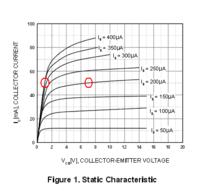The-Kevster
Newbie
Hi all,
I'm trying to figure out the calculation for a base leg resistor but the more information I read the more there is to confuse me.
A rough diagram from google images...

My vales are as in the picture (nice when it works out) except for the resistor which I am unsure about. My relay will use 170mwatts at 5v which works out to 34ma and I'm going to calculate to 50ma for safety.
I've read a lot about saturating the transistor but also that it's not necessary and I should work out exactly what the base leg requires and use a minimum.
I was looking at using a BC548 which has a minimum hfe of 110 so I should only need to provide 0.5ma to get 50ma out. But the BC548C has a minimum hfe of 400 so I would only need 0.125ma to saturate it. Lastly I've then seen that using BC548's is outdated and I should be using a modern BC327?
any help and opinions are greatly appreciated!
Thanks,
Kev
I'm trying to figure out the calculation for a base leg resistor but the more information I read the more there is to confuse me.
A rough diagram from google images...

My vales are as in the picture (nice when it works out) except for the resistor which I am unsure about. My relay will use 170mwatts at 5v which works out to 34ma and I'm going to calculate to 50ma for safety.
I've read a lot about saturating the transistor but also that it's not necessary and I should work out exactly what the base leg requires and use a minimum.
I was looking at using a BC548 which has a minimum hfe of 110 so I should only need to provide 0.5ma to get 50ma out. But the BC548C has a minimum hfe of 400 so I would only need 0.125ma to saturate it. Lastly I've then seen that using BC548's is outdated and I should be using a modern BC327?
any help and opinions are greatly appreciated!
Thanks,
Kev
